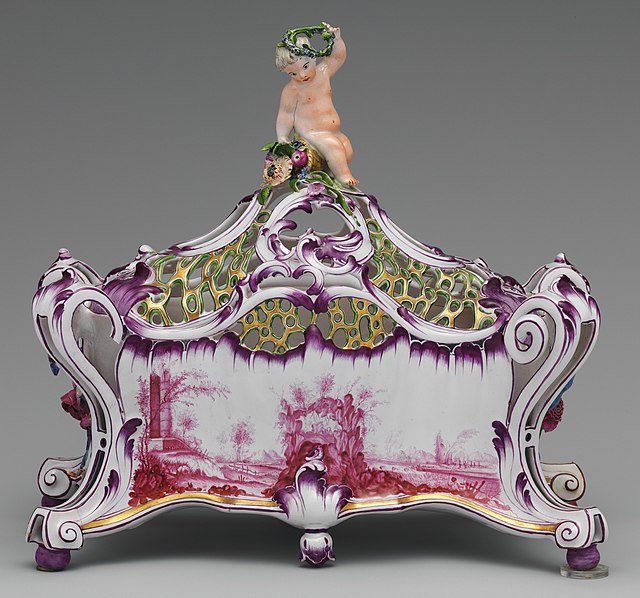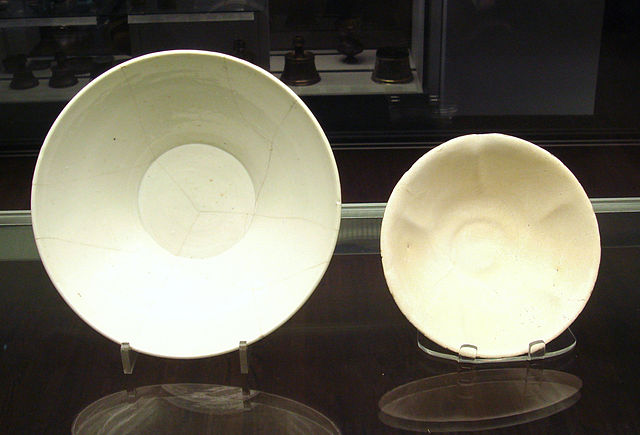Faience or faïence is the general English language term for fine tin-glazed pottery. The invention of a white pottery glaze suitable for painted decoration, by the addition of an oxide of tin to the slip of a lead glaze, was a major advance in the history of pottery. The invention seems to have been made in Iran or the Middle East before the ninth century. A kiln capable of producing temperatures exceeding 1,000 °C (1,830 °F) was required to achieve this result, the result of millennia of refined pottery-making traditions. The term is now used for a wide variety of pottery from several parts of the world, including many types of European painted wares, often produced as cheaper versions of porcelain styles.
Modern bowl in a traditional pattern, made in Faenza, Italy, which gave its name to the type
Sophisticated Rococo Niderviller faience, by a French factory that also made porcelain, 1760–65
Hispano-Moresque ware dish from Manises, 15th century, the earliest type of European faience
Rococo tureen, Marseille, c. 1770
Tin-glazed pottery is earthenware covered in lead glaze with added tin oxide which is white, shiny and opaque ; usually this provides a background for brightly painted decoration. It has been important in Islamic and European pottery, but very little used in East Asia. The pottery body is usually made of red or buff-colored earthenware and the white glaze imitated Chinese porcelain. The decoration on tin-glazed pottery is usually applied to the unfired glaze surface by brush with metallic oxides, commonly cobalt oxide, copper oxide, iron oxide, manganese dioxide and antimony oxide. The makers of Italian tin-glazed pottery from the late Renaissance blended oxides to produce detailed and realistic polychrome paintings.
Maiolica charger from Faenza, after which faience is named, c. 1555; Diameter 43 cm, Tin-glazed earthenware
Tin-glazed (Majolica/Maiolica) plate from Faenza, Italy
Chinese porcelain white ware bowl (left), not tin-glazed, found in Iran, and Iraqi tin-glazed earthenware bowl (right) found in Iraq, both 9-10th century, an example of Chinese influences on Islamic pottery. British Museum.
A Hispano-Moresque dish, approx 32cm diameter, with Christian monogram "IHS", decorated in cobalt blue and gold luster. Valencia, c. 1430–1500. Burrell Collection








